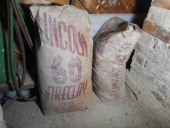posted 9 years ago
I am new to this forum, and I have been experimenting with rocket stoves and rocket mass heaters for about three years before visiting this site. I had run across Paul's videos and finally decided to come and visit his site, and I am glad I did and hope to be a regular contributor in many areas here as I develop this land (100 acres of south facing steep wooded slope with about 5 acres reasonably usable for on contour swales and hugleculture applications - all in very neglected shape as of right now) into a permaculture paradise. I hope to continue to learn from the rest of you fine folks, as well as sharing my insights and hard learned lessons along the way.
Now to my question. I first got into my head that vermiculite was the best aggregate for light weight concrete as well as a great insulator, and now that I visit this forum all I ever see talked about is perlite. Is there a difference in performance? Being an old school concrete superintendent and having built everything from bridges to refineries, to K Marts, I am stuck in the vermiculite frame of mind when thinking of concrete casting. I have recently built a rocket mass heater in my work shop, and I am quite impressed and satisfied with the performance, but I will soon be building one in the main house, and I want to do the best job I can do, so is perlite better? I have a 8" system in my shop with a kiln brick fire box and combustion chamber feeding a terracotta flue chimney with a 2" cast layer of vermiculite mixed 5 parts vermiculite/1 part refractory clay, and 1 part Portland cement. The burn box and combustion combustion chamber are finished out with 2"x 8*'x 16" masonry pavers set on edge and 2" of vermiculite between the fire box/ combustion chamber and the outside paver "skin." Over the burn chamber there is 3" of vermiculite covered with a 2" concrete slab, locking the tops of the outside paver "skin" together for a solid mass. The mass is formed with 8" ducting and an outer "skin" of the on edge pavers, filled with a sand/ clay mix, and topped with 2" of concrete. I have been running it for about 2 weeks now and I am quite happy with the performance, but I want to know if I can do better on the main house's RMH.
Also I would like input as to whether the terracotta flue is a mistake. I was buying my kiln brick, refractory clay, and vermiculite when I saw the flue sections, and the salesman said he thought they would work for my application. Like I said, I cast in place a 2" insulation on the outside of it, so I am hoping that this is not a mistake and wondering if I should repeat it in the main house RMH. Any comments would be appreciated because this was an impulse purchase and design change and I have never heard of anyone doing this in all of my research. The 24" sections were only $16 each and it took 1 3/4 for the height I needed for the drum I used. Like I said, I am very happy with the performance of the system, but it is only about 2 weeks old and I am now wondering if the terracotta flue will break down in time. I had a portable rocket stove made out of stainless steel, and it only took 2 winters and it was rotten and all but evaporated. I would hope that the terracotta flue pipe would hold up much linger.
Critical thinking skills are critical at the juncture we find ourselves at, and we can arm ourselves and most importantly the future generations with the "Trivium Method" of critical analysis. For more information read chapter one of my book for free here http://www.theillusionsapocalypse.com/chapter-1.html








